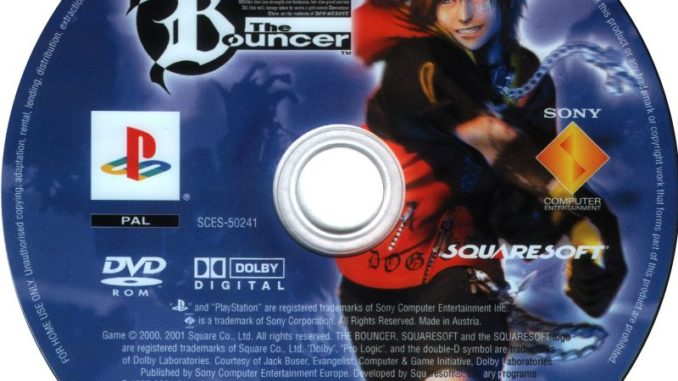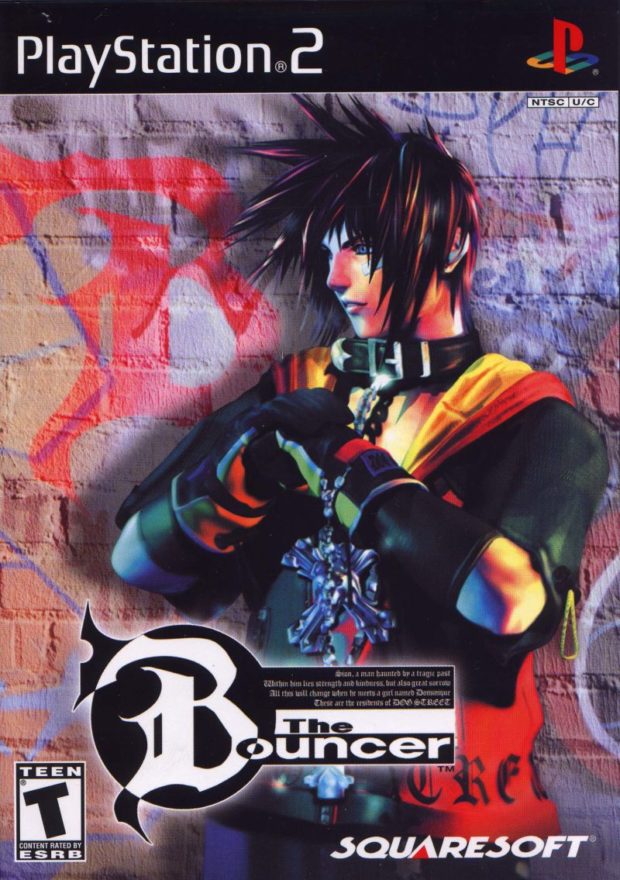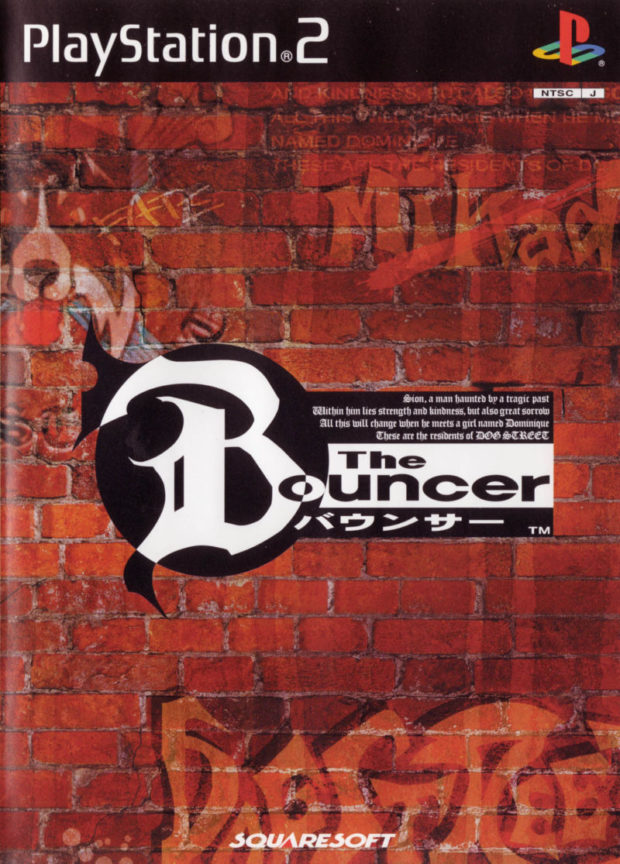
 March 6th, 2001 seems like a time of myth and lore when it comes to the world of video games. The PlayStation 2 was a console known for its Role Playing prowess and SquareSoft/Enix was its main supplier. But within the first quarter of 2001, the above-mentioned publisher released a title that was unlike anything they ever produced before. The Bouncer was first and foremost a beat em up’ game intended for the sixth generation gamer. But unlike other titles released by the company that brought us Final Fantasy, The Bouncer met with mixed reviews ranging from mediocrity to utter disappointment. But almost two decades later and looking at this game from a more detached perspective, one can see the diamond buried deep within this barren mine of a title.
March 6th, 2001 seems like a time of myth and lore when it comes to the world of video games. The PlayStation 2 was a console known for its Role Playing prowess and SquareSoft/Enix was its main supplier. But within the first quarter of 2001, the above-mentioned publisher released a title that was unlike anything they ever produced before. The Bouncer was first and foremost a beat em up’ game intended for the sixth generation gamer. But unlike other titles released by the company that brought us Final Fantasy, The Bouncer met with mixed reviews ranging from mediocrity to utter disappointment. But almost two decades later and looking at this game from a more detached perspective, one can see the diamond buried deep within this barren mine of a title.
The Plot
Set in the steampunk milieu of a distressed bar in Dog Street, The Bouncer centers on three protagonists in their search of a young girl named Dominque Cross and her capture by an evil conglomerate called Mega Corporation, similar to Final Fantasy 7’s Cloud and his struggles against the Shinra company. The game allows players to choose between three characters, each possessing his own style of combat and story arc. Sion Barzhad is the main character and the chosen leader of the trio. Volt Krueger is a secondary character who focus is on raw brutal strength, much like Haggar is in the Final Fight series. A tertiary character named Kou Leifoh is a blend of the other two, mixing speed and power to mask his more serious nature that resides underneath his rambunctious demeanor. As you progress through the game, depending on the character you choose, the diegetic elements of the story reveal the reasons why Mega Corp abducted Dominique and her hidden nature as a droid which will have major implications on the fate of society. But as the plot unfolds there are slight variations to Dominque’s purpose and identity depending on the branching paths you take with each character. As a whole, The Bouncer’s plot is as convoluted as it gets which is what it had received such mixed reactions during the time of its release. But further insight into this unpolished gem reveals some depth behind its meager beat em up origins.
The Gameplay
Similar to most other titles in the genre, The Bouncer is a mixture of action and combat that is accompanied by nuances of timed sequences that render this game a twinge of different from its other predecessors. Most beat ’em ups up till then were mindless romps through different levels that culminated in a boss battle in order to complete the stage. But The Bouncer did not cater to this formulaic trope, providing players with branching pathways, different stages depending on character selection, and timed sequence events that predated the God of War series by almost five years. This was an amazing feat by a company known only for its JRPG’s and turn-based combat systems. But the above-mentioned game was unlike anything that SquareSoft/Enix ever published and it was definitely a much-needed title on a console that was still relatively new at the time. The Bouncer did not follow series such as Final Fight or Streets of Rage in their penchant for mindless button mashing and lack of variation.
As a Whole
In terms of its totality as a game, The Bouncer should not have been maligned as it was at the time of its release back in 2001. Surely it lacked the depth of other series made by its publisher but that does not mean it was a bad game. On the contrary, what The Bouncer lacked in concision it made up for it in novelty. Being Square’s first title for the PS2, the beat em’ up they created was nothing short of an effort into changing the cliché’s that have plagued so much of the action genre. This is most evidenced in the part of the game when the trio makes it to the Galeos station where Dominque is being held captive. Relevant to who the player chooses after the three main characters defeat the enemy known as the Panther, the plot unfolds in a variety of ways ranging from the Panther revealing that she was a robot created by the corporation to dying in Sion’s arms after realizing she knew him at one point. Such drastic shifts in the plot lend this title a greater degree of replayability that did not exist in the beat em’ up genre at the time.
 Even the character animations were unlike anything available on the console market in the early 2000’s. Despite the spikey hair and over the top dialogue that plagued Square games up till that point, The Bouncer offered each protagonist a distinct style both in terms of speech patterns and dress. This comes out mostly during cutscenes during a break in the action. Sion is the youngest and most reserved of the three which is why his speech is curt and to the point. Volt’s large physique devilish horns are equally matched by his deep baritone voice, a brilliant move by actor Mike D’Gard. Although slender in frame, Kou is covered in tribal tattoo’s that bring a sense of flamboyance to a character that is steeped in theatrics and rash decision making. At times though the dialogue in The Bouncer is stilted, but overall effective in its progression of the story from beginning to end. Something that is more prevalent in bigger budget titles like Final Fantasy X.
Even the character animations were unlike anything available on the console market in the early 2000’s. Despite the spikey hair and over the top dialogue that plagued Square games up till that point, The Bouncer offered each protagonist a distinct style both in terms of speech patterns and dress. This comes out mostly during cutscenes during a break in the action. Sion is the youngest and most reserved of the three which is why his speech is curt and to the point. Volt’s large physique devilish horns are equally matched by his deep baritone voice, a brilliant move by actor Mike D’Gard. Although slender in frame, Kou is covered in tribal tattoo’s that bring a sense of flamboyance to a character that is steeped in theatrics and rash decision making. At times though the dialogue in The Bouncer is stilted, but overall effective in its progression of the story from beginning to end. Something that is more prevalent in bigger budget titles like Final Fantasy X.
As a whole, The Bouncer flows evenly from the first act all the way to the climax of the story with each action sequence breaking up the monotony that can sometimes characterize a Square title. These brief punctuations of time-based events give the game more depth of play than the typical break everything and throw everyone mechanics that have perpetuated the mindless nature of the genre. But this does not mean The Bouncer is without its flaws. At times the plot can be considered convoluted with touches of Blade Runner and FF7 being mashed together in a pastiche of varied styles that don’t altogether complete the puzzle. The added bonus of a survival mode is unnecessary since it does little to alter the story or its various outcomes. Furthermore, the points system is ridiculous when one considers the fact that you cannot purchase items nor power-ups in the world of the story. Both gestures by the developer are futile attempts to bring more variation to a style of gaming that needed more depth of gameplay then novel touches. But in the end, these mishaps are minor when compared to the overall finished product.
As an entry title by Square, The Bouncer in hindsight was not as bad as critics made it out to be in 2001. Time has proven that many titles from yesteryear have become hidden gems or classics in the eyes of retro gamers. Collectors have made the PlayStation 2 a sought-after system not so much as a piece of hardware but for its library of games. Although The Bouncer will never rate among the system’s finest outings, like Shadow of the Colossus or the Ratchet and Clank series are, it still offered the gaming community something new in a genre plagued by mundanity. Now is the time more than ever to pick up this much-maligned hidden gem in the PS2’s cannon. As prices soar on retro titles, gamers can pick up a relic from a company trying to unleash onto the console market something new. The Bouncer represents a product that is both broken and yet intentionally flawed. Gamers never get to see a sequel to The Bouncer but that does not mean its inception should at all be maligned. Retro lovers can look back and see a piece of artwork, a misconstrued canvas brought together by a pallet of nuance yearning to break away from tradition. Surely this will never be considered a masterpiece but that sometimes is a good thing. The Bouncer does not share the nostalgia that other PS2 games have with its fan base. But a deeper look will reveal a piece of art that is yearning to be something new even if final outcome failed to match its truthful intentions.


Leave a Reply